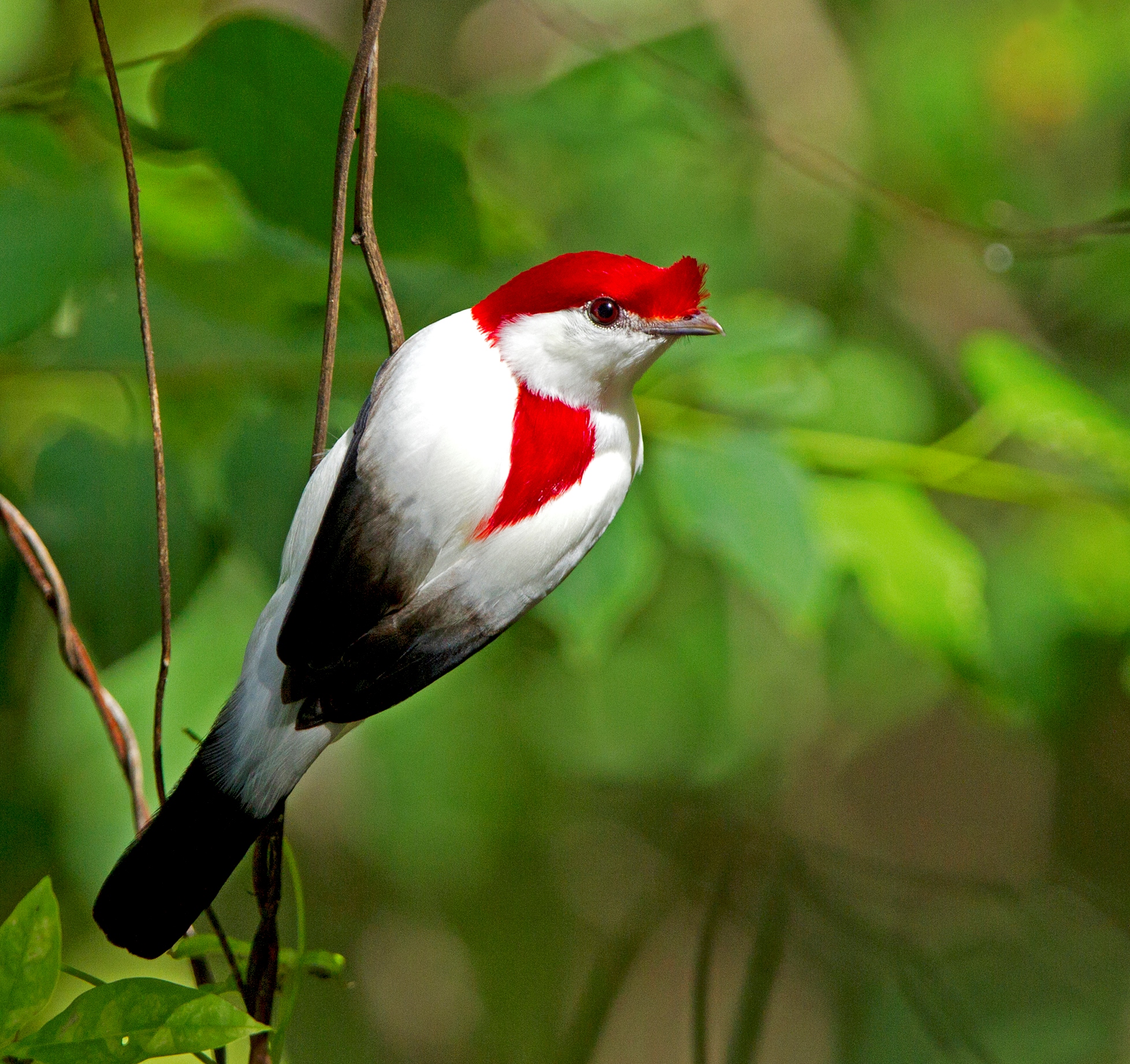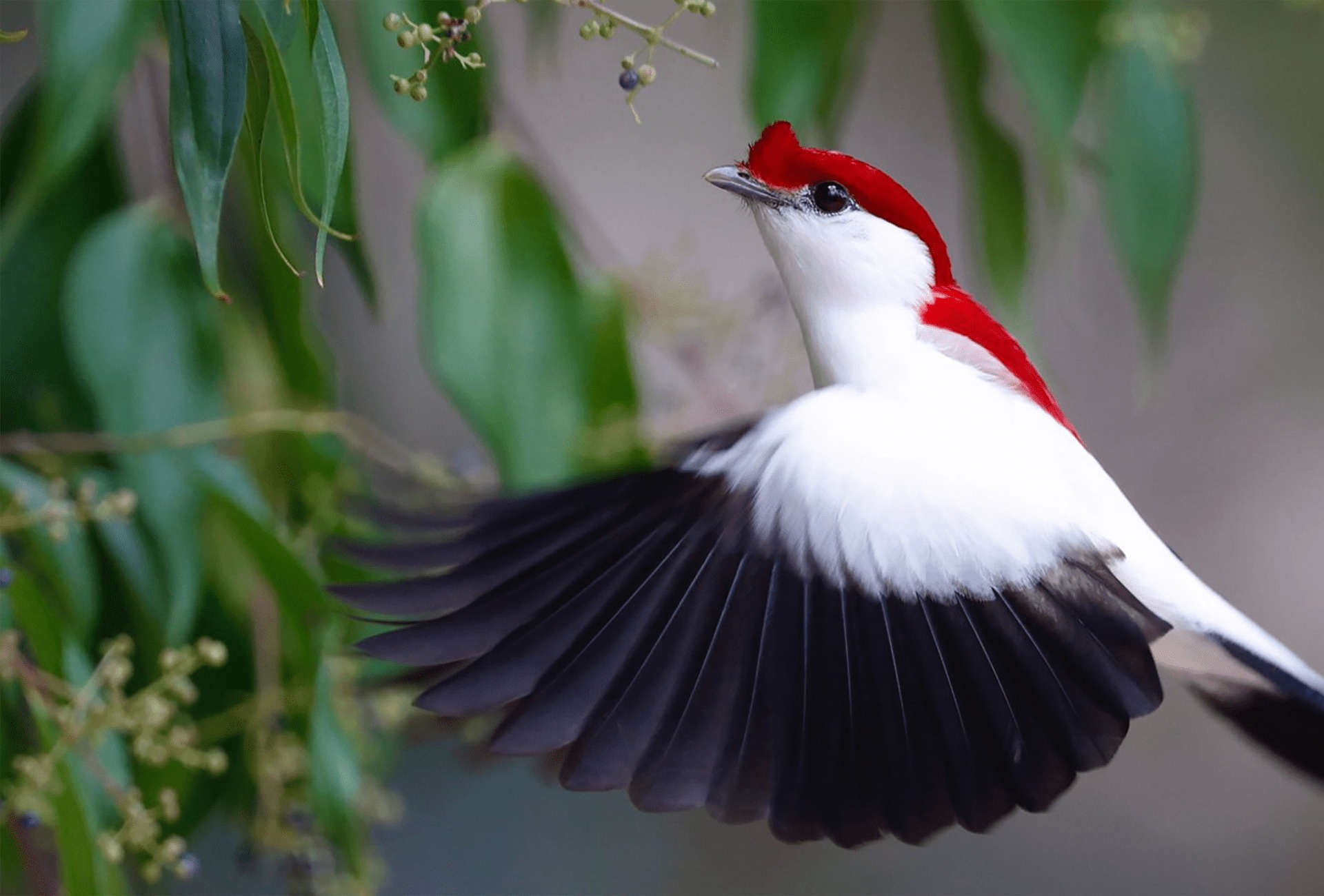The Araripe Manakin is a stunning white bird that boasts a vibrant red crown.

The Araripe Manakin, also known as Aptilophia bokermanni, is a bird species that finds itself in a concerning state of critical endangerment. With its strikingly patterned plumage, this species displays strong sexual dimorphism between males and females. These birds are relatively large, measuring approximately 14.5 centimeters (5.7 inches) in total length, and boast a long tail. The males stand out with their mostly white feathers, black wings and tail, red feather crown with a frontal tuft, and red mid-back area.

The iris, which is the part of our eye that adds color, has a reddish hue. In females, their iris is typically an olive-green shade with a lighter belly and a smaller tuft of olive-green feathers near their beak.

The feathered creature in mention is exclusively native to a restricted zone in the lower region of Chapada do Araripe located in the southern part of Ceara, Brazil. These birds are commonly spotted in pairs.

The Araripe Manakin can only be found living in a specific type of environment – a moist forest situated near a river. This kind of forest is referred to as a “gallery” forest and is sustained by springs flowing from the Araripe Plateau. The streams then lead into dry regions like shrublands and sparse forests that encircle the riverbank’s woodlands.

These feathered creatures have a varied diet consisting of different kinds of fruits that are abundant in the dense understory. They also share their natural habitat with other exclusive species from Brazil, such as the Cordia species.

The araripe Manakin experiences a period of breeding that aligns with the 6-month rainy season. They typically produce 2 offspring each year. It was noted that there were fewer offspring in regions with less rainfall, areas where forests are fragmented, or areas with high levels of human activity. The mother is responsible for parental care during all stages of breeding, regardless of whether there is 1 or 2 offspring.

Back in 2000, a water park was built in Nascente do Farias area, which caused significant damage to its natural habitat. The vegetation was removed, making way for banana plantations, and the swimming pools and paved roads replaced the greenery. Today, the population of mature individuals in this region is estimated to be between 150-700 as of August 7th, 2018.




